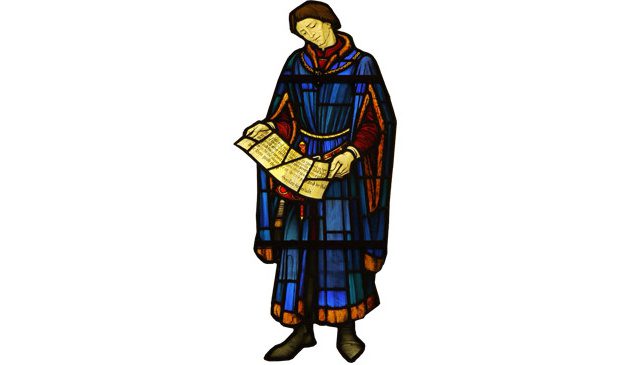In brief – London in the late-Middle Ages

The west side of London in the Middle Ages, looking north. The vast St. Paul’s Cathedral dominates everything around. The city is surrounded by the wall, built on its Roman foundations. On the left the River Fleet flows south to where it meets the Thames. On the riverside in the bottom right is Queenhithe dock. On the centre right runs Cheapside with Cheap Cross in the middle of the street.
Imports and exports through the port of London continued to increase, drastically changing the economy of London and the country as a whole. Yet overseas trade in and out of the wharves along the riverside was still largely controlled by foreign merchants. Trade throughout northern Europe was dominated by the Hanseatic League, a group of traders based in Cologne, Hamburg and Lübeck. Their base in London was the ‘Steelyard’, a walled community of warehouses where Cannon Street station now stands. A shipbuilding and repair industry had grown around the villages of Ratcliffe, Wapping, Shadwell, Limehouse, Poplar and Blackwall by the mid-14th century. As ships grew larger, shipbuilding moved further downstream and work was being undertaken at Greenwich by the 15th century.
Fresh water was taken from rivers and wells but, as the population grew, conduits had to be constructed to bring supplies from more distant springs. Human and animal waste, emptied into underground cesspits or directly into rivers such as the Thames and Fleet, became a growing problem.
In the latter part of 1348 the plague known as the ‘Black Death’, originating in Asia, arrived in England with devastating effect. It is estimated that around half of London’s population died in the following two years and a decade later one third of the land within the City walls remained uninhabited, with unoccupied houses left to ruin and vacant plots appearing.
Medical knowledge was still very rudimentary. Academic ‘physicians’ advised on remedies to ailments, which were supplied by apothecaries, while surgery was carried out by barbers. Provision for the sick and poor was the responsibility of parish churches but from the 12th century monasteries began to form hospitals, such as St.Thomas’s and St.Bartholomew’s.
Until the early 14th century the jewellery and other valuables belonging to the monarch were kept in the crypt of Westminster Abbey, to be both safe and close to the royal palace. However in 1303 there was a theft and thereafter they were moved to the Tower of London where the Crown Jewels remain today.
When Eleanor of Castile, first wife of Edward I, died in Nottinghamshire the great warrior king was heartbroken. Accompanying her body back to Westminster he ordered a stone monument, or ‘cross’, to be built at each location they stopped for the night, including three in the London area. Of those Waltham Cross in Hertfordshire is the only remaining original and that at Charing Cross station is a Victorian copy. The one at Cheapside was destroyed during the 17th century and never replaced.
During a time when England was under threat from France, the regents of the young Henry III strengthened England’s castles, expanding the Tower of London. Later in his reign Henry was given gifts of several exotic animals, starting a royal menagerie at the Tower that lasted until the 19th century. Another major expansion of the castle took place under Edward I in the late 13th century. Although many further minor additions were made over the years, particularly the riverside wharf during the reigns of Edward III and Richard II, by 1300 the Tower of London was largely as it remains today.


